Sjögren’s Syndrome
Sjögren’s (SHOW-grins) syndrome is primarily characterized by eye and mouth symptoms caused by an abnormal composition and/or impaired production of tear fluid and saliva. White blood cells (in this case, lymphocytes) are attacking the moisture-producing glands causing inflammation in the lacrimal and salivary glands. This causes dry eye and dry mouth.
Sjögren’s is the third most common autoimmune disease and is extremely hard to diagnose due to the generalized symptoms. It may take, on average, up to 4 years for a proper diagnosis. Currently there are over 4 million people living with Sjögren’s with the majority of patients being females.
The most common symptoms are dry eye and dry mouth. However, Sjögren’s is a systemic autoimmune disease, meaning it may also affect other organs such as the kidneys, lungs, liver, and pancreas. Other symptoms may include skin rashes, joint pain and swelling, persistent dry cough, and prolonged fatigue.
There may be other causes for your symptoms. Medications are a great example. Many prescription and over the counter medications can cause dry mouth, dry eye, and other symptoms that closely match Sjögren’s. Dry mouth is a leading cause of tooth decay and the need for dental extractions.
“Ask your doctor to discontinue or provide substitutes for all medications that cause dry mouth.” – Sjögren’s Syndrome Foundation “Survival Tip”
There is no cure for Sjögren’s but treatment options are available. Aside from over the counter eye drops and mouthwash products, prescription drugs for dry eye and dry mouth are available and include Evoxac® (cevimeline), Salagen® (pilocarpine hydrochloride) and NeutraSal® for dry mouth and Restasis® (cyclosporine ophthalmic emulsion) and Lacrisert® (hydroxypropyl cellulose ophthalmic insert) for dry eye. Some patients are prescribed immunosuppressive medications to treat internal organ manifestations that may be present and may also be prescribed additional medications for severe flares.
Sjögren’s Syndrome affects each patient differently and there is not one test that can confirm a diagnosis. Due to the range of symptoms, it is imperative you create a health care team that includes an eye care specialist, a dentist, and a rheumatologist, as testing varies by each specialist. A rheumatologist is the primary specialist responsible for diagnosing Sjögren’s.
Some testing your health care team may consider includes:
Blood testing:
ANA (Anti-Nuclear Antibody)
ANA’s are a group of antibodies that react against normal components of a cell nucleus. About 70% of Sjögren’s patients have a positive ANA test result. Many people think an ANA is just for Lupus, but this is not true.
RF (Rheumatoid Factor)
This antibody test is often performed for the diagnosis of rheumatoid arthritis (RA) but is positive in many rheumatic diseases. In Sjögren’s patients, 60-70% have a positive RF.
SS-A (or Ro) and SS-B (or La)
These are the marker antibodies for Sjögren’s. Seventy percent of Sjögren’s patients are positive for SS-A and 40% are positive for SS-B (these may also be found in lupus patients).
ESR (Erythrocyte Sedimentation Rate)
This test measures inflammation. An elevated ESR, or SED rate, indicates the presence of an inflammatory disorder, potentially including Sjögren’s.
IGs (Immunoglobulins)
These are normal blood proteins that participate in immune reactions and are usually elevated in Sjögren’s patients.
Ophthalmologic (eye) testing:
Schirmer Test
Measures tear production.
Rose Bengal and Lissamine Green
Eye drops containing dyes that an eye care specialist uses to examine the surface of the eye for dry spots.
Dental testing:
Salivary Flow
Measures the amount of saliva produced over a certain period of time.
Salivary scintigraphy
A nuclear medicine test that measures salivary gland function.
Salivary gland biopsy (usually in the lower lip)
Confirms inflammatory cell (lymphocytic) infiltration of the minor salivary glands.
We hope you have learned enough about Sjögren’s to effectively advocate for yourself should you find you experience symptoms, or you are already diagnosed. You can visit the Sjögren’s Syndrome Foundation for more information and additional tools to help.
Simply Put
“Simply Put” is a service of Myositis Support and Understanding, to provide overviews of Myositis-related medical and scientific information in understandable language.
MSU volunteers, who have no medical background, read and analyze often-complicated medical information and present it in more simplified terms so that readers have a starting point for further investigation and consultation with healthcare providers. The information provided is not meant to be medical advice of any type.









